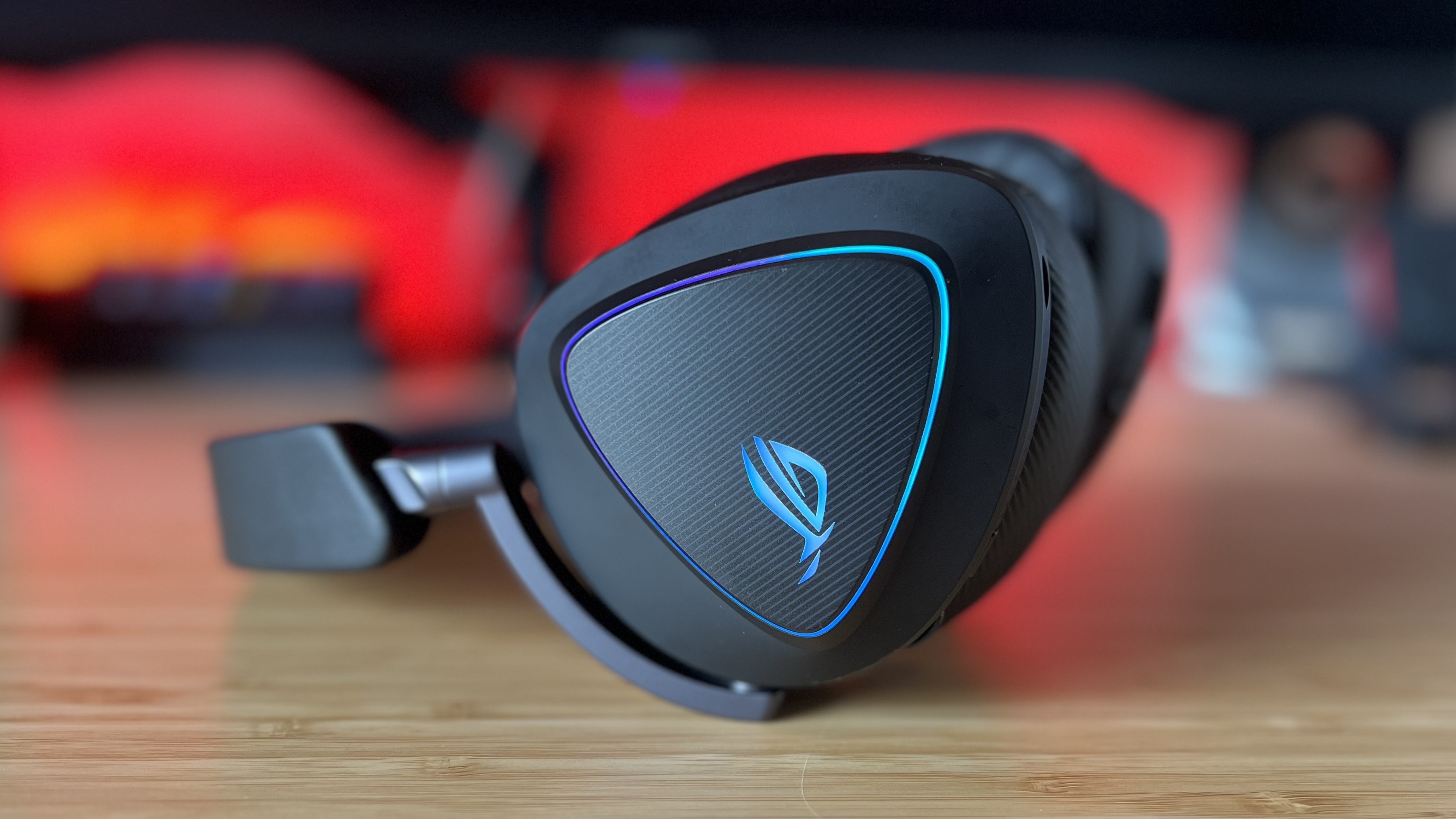
It’s been a while since I’ve had the chance to talk about Asus’s gaming headsets. The new Asus ROG Delta II comes four years after the release of the Delta S model I reviewed back in the day, but brings with it a number of modern enhancements that work hard to cement its place in the upper mid-range market.
At $229 / £219, the Delta II is punching with some big guns in both performance and value - priced $100 below the best gaming headset on the market, the SteelSeries Arctis Nova Pro Wireless, but around $100 more than the SteelSeries and Razer models that occupy the popular $120 price range, this is a headset firmly in the middle of the pack.
The standout feature here comes from just how hard Asus has leaned into its simultaneous connectivity. This is a feature that allows headsets to run audio through a 2.4GHz dongle connection and via Bluetooth at the same time, and it rarely makes its way to headsets below that $350 premium price point. While the extra support for players who want these different channels is unparalleled, and competitive experiences are particularly well catered to through fantastic soundstage positioning, the ROG Delta II doesn’t do enough to separate itself from cheaper options overall.
Design
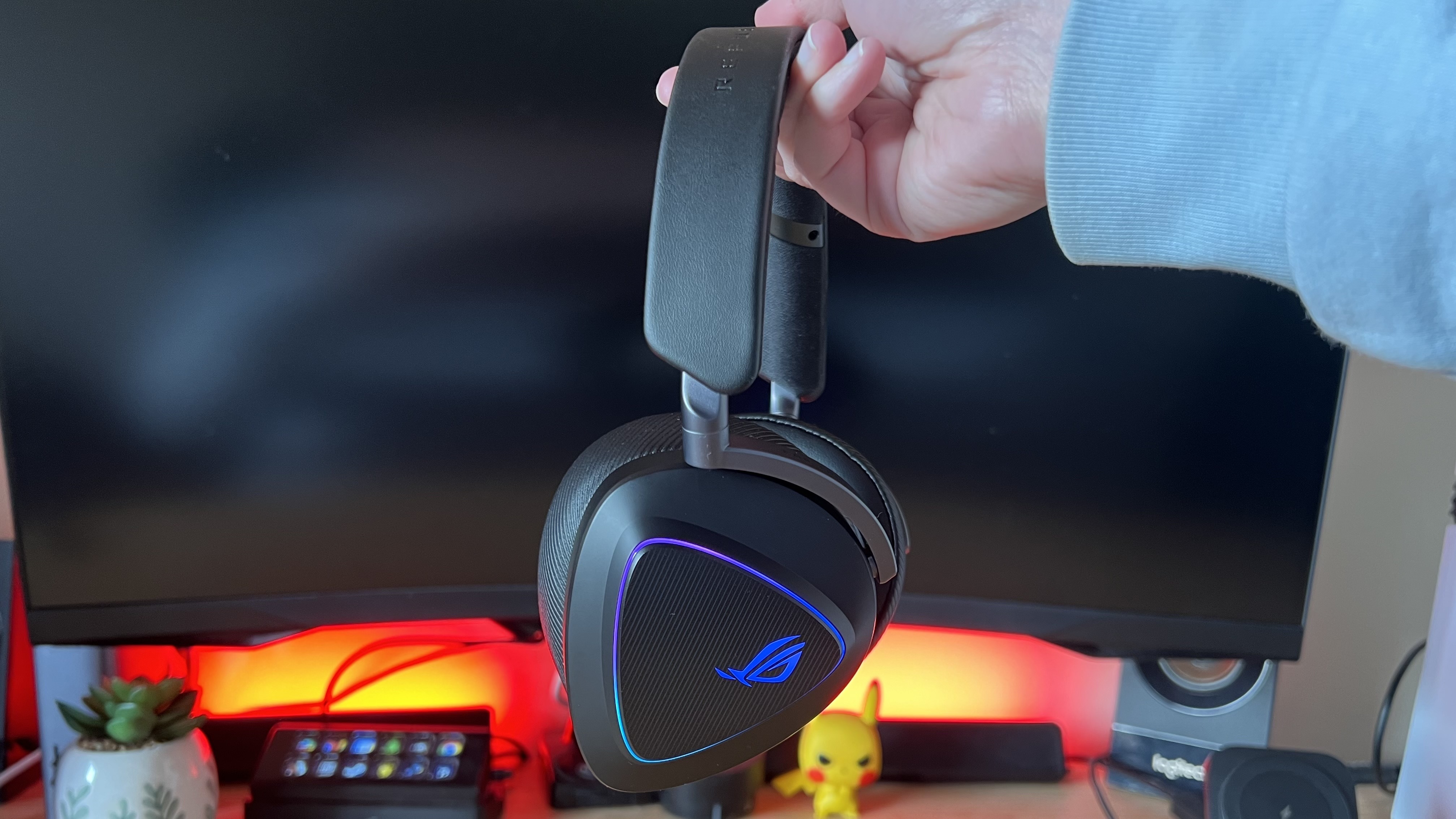
I liked the triangular step Asus took outside of the mainstream with its original Delta headsets, and I’m glad to see the form factor return in the new release. The angular lines feel a little softer this time around, with a slightly more squat cup shape overall. That’s a running theme in the Asus ROG Delta II, everything looks and feels more streamlined. Whereas the originals featured chunky plastic yokes reaching around both sides of the earcup, the new model is far more modern in its approach, with anodized metal reaching from the headband to the rear of each cup, allowing for full swivel and a slight angular tilt towards the head.
It doesn’t just look better, the cups themselves sit particularly well on the head. I would have appreciated some extra clamp force (as it stands, the looser fit allows a lot of external noise to creep into your listening), but the spacious enclosure inside each of these cushions feels more relaxed as a result.
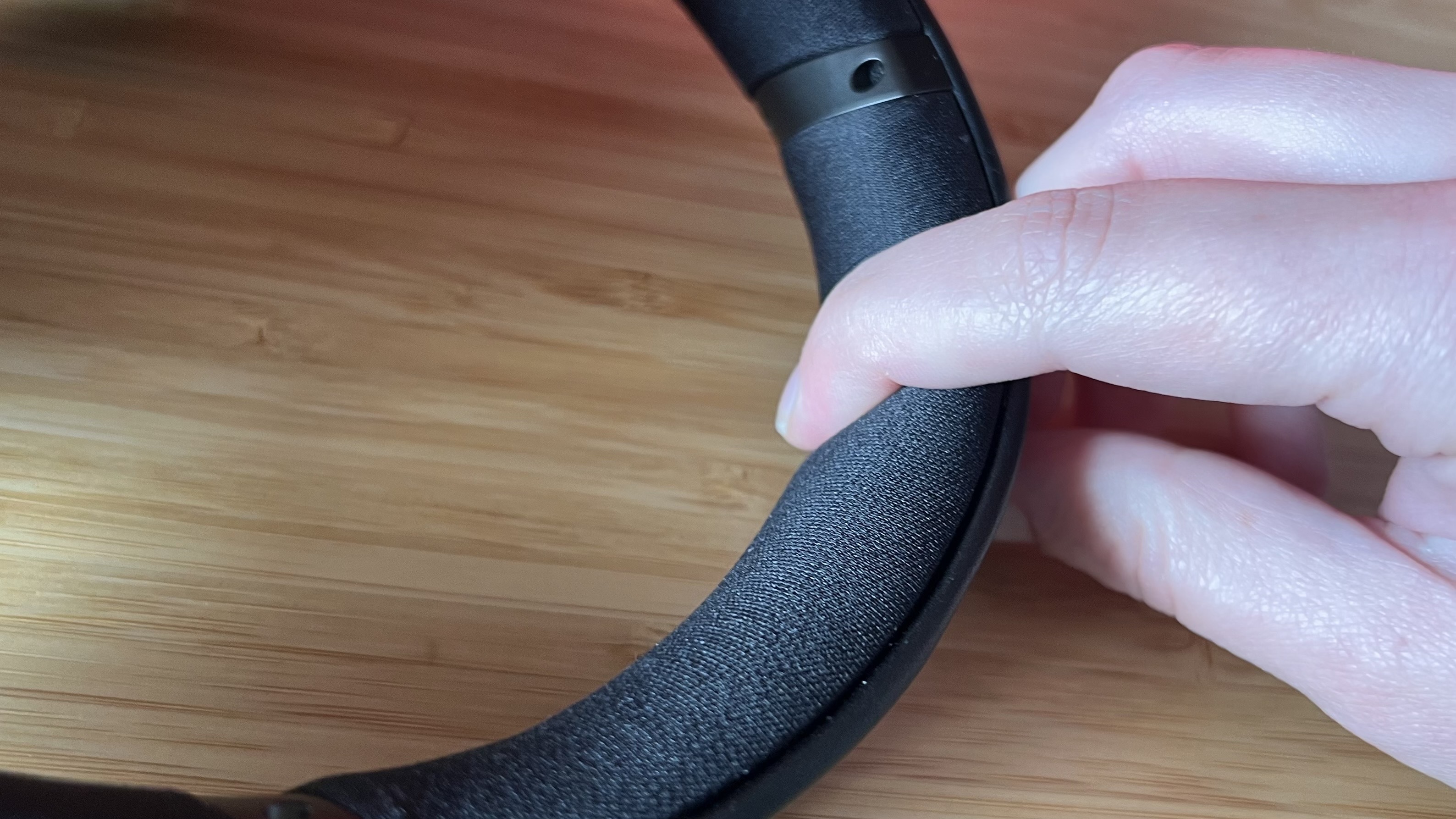
That’s a win for comfort, but it’s a win that might be retracted by the skinnier headband. This harder strap does offer a thin layer of the same memory foam cushioning you’ll find in the main cups, but it’s not enough considering the pressure placed on the crown by the thinner design. There’s only 318g of weight pulling down from this band (slightly less than the SteelSeries Arctis Nova Pro Wireless), but it’s still enough to create an ache right in the center of where the headband sits. This was noticeable from the moment I put it on, and continued to worsen through longer sessions.
The looser clamp force also feels like it’s compounding this problem - there’s usually a little support from the cups themselves when they’re pressed against the side of the head, but here they feel like they’re hanging directly downwards. It’s a far cry from the extremely comfortable Turtle Beach Atlas Air, which uses a comparatively huge mesh headband cushion and a floating earcup design.
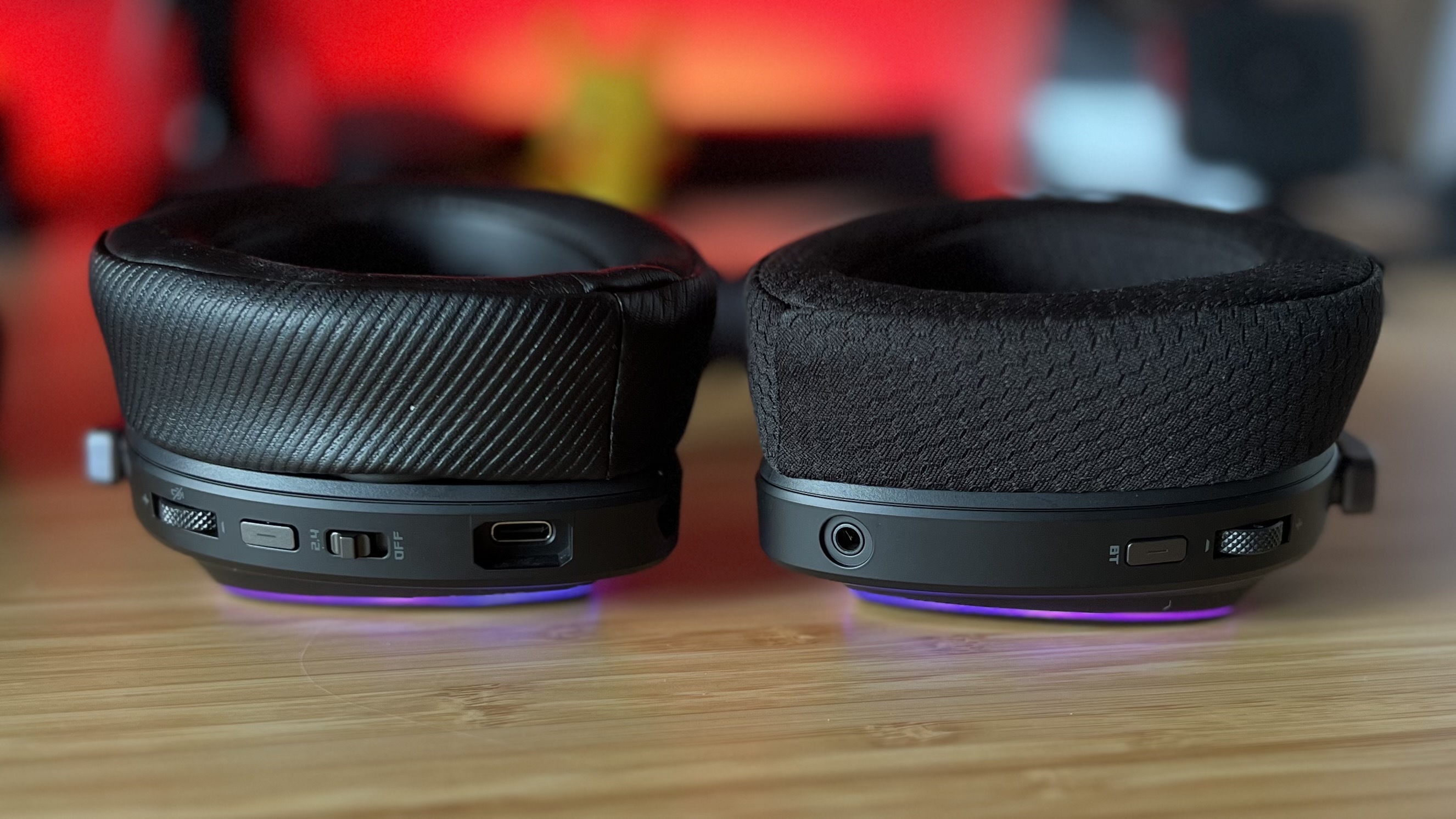
Out of the box, the Asus ROG Delta II comes with leatherette earcups, but these can be swapped for a set of mesh covers (also included). I stuck with the leatherette for most of my testing, though did enjoy the softer feel of the mesh during changes. Sound isolation is already a struggle here, though, so I would recommend sticking to the harder material unless you’re in a particularly warm environment. The sides of these covers are nicely textured to provide a little visual pizazz, while the inside of each cup remains matte to ensure those ridges don’t get irritating.
An all-black design (save for the gray yokes) is perfectly complimented by the more outlandish earcup shape and the additional RGB lighting on both sides. Each earcup features a slightly raised center, with a strip of LEDs around the rim and an illuminated Asus logo in the center. As always, this extra design element is only going to be worth it if you’re a die-hard RGB fan - even streamers won’t get much use out of it considering it won’t be too visible on camera from the front. It also runs the battery down quite considerably as well.
Features
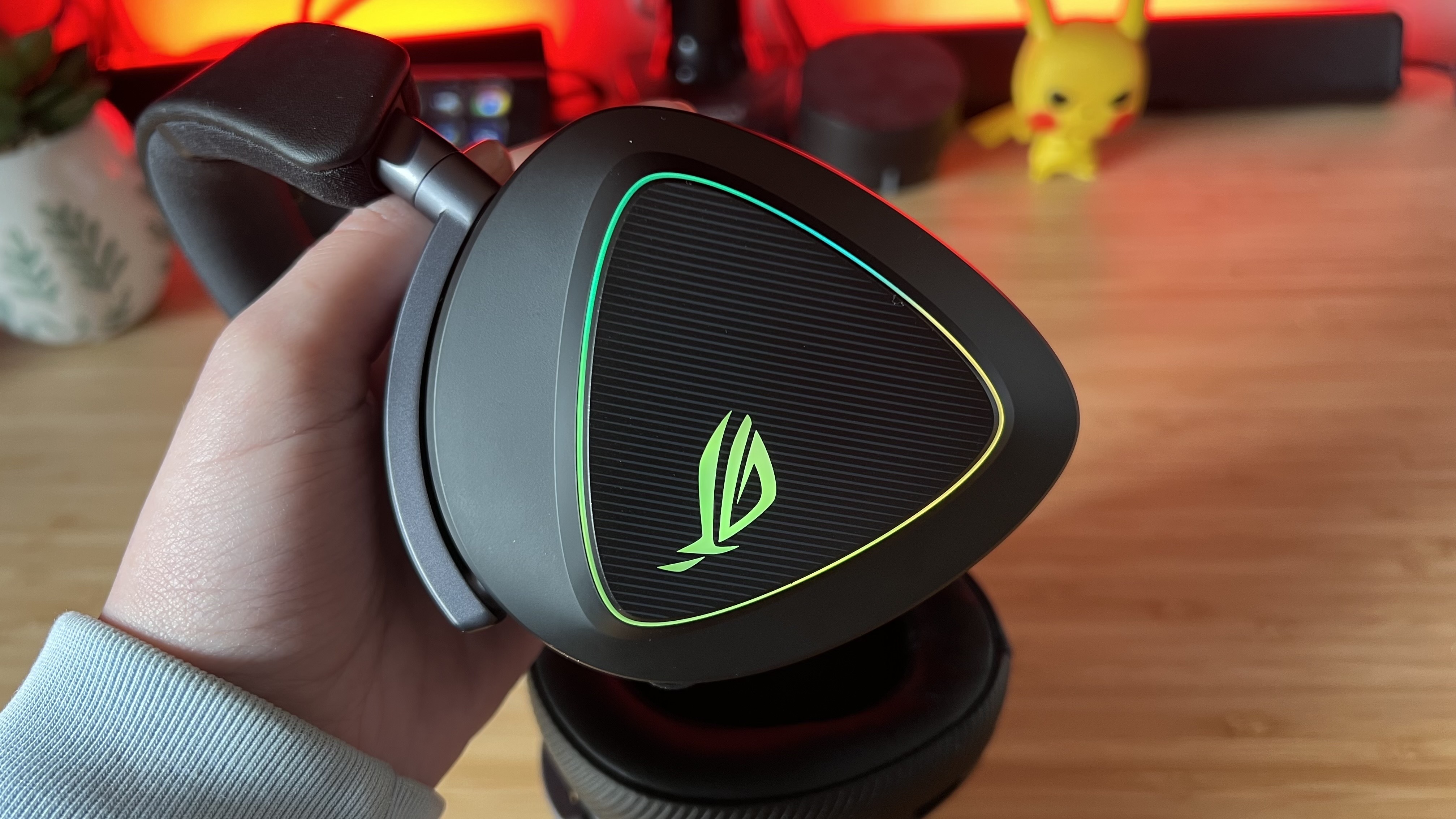
Asus has put its wireless connection options front and center of its marketing efforts for the Delta II, and so it should. I rarely see simultaneous 2.4GHz and Bluetooth connections available on even the best wireless gaming headsets, and having enjoyed the feature on the SteelSeries Arctis Nova Pro Wireless and Astro A50 X, it’s certainly something I hunt down.
The ROG Delta II takes things one step further, though, with dedicated volume and playback controls (via a multi-function button on each side) for both 2.4GHz and Bluetooth audio streams. I’m used to fiddling with volume on individual devices to find the right balance between two connections, and this was a real game-changer. It’s a standout feature on the headset overall, offering immediate access to both connections for quick adjustments and pauses - something I’m going to struggle to work without once I move on to the next device.
The 2.4GHz volume dial also doubles up as a nifty mic-mute function when pressed, while the function buttons on both sides offer additional controls as well. The left 2.4GHz scroller toggles RGB lighting when pressed and held, while the right Bluetooth button can answer and reject calls with a tap. It’s an incredibly well-designed system of controls that evades the common overcrowding problem in headset clickers and dials while still providing functionality for both home gaming and on-the-go listening.
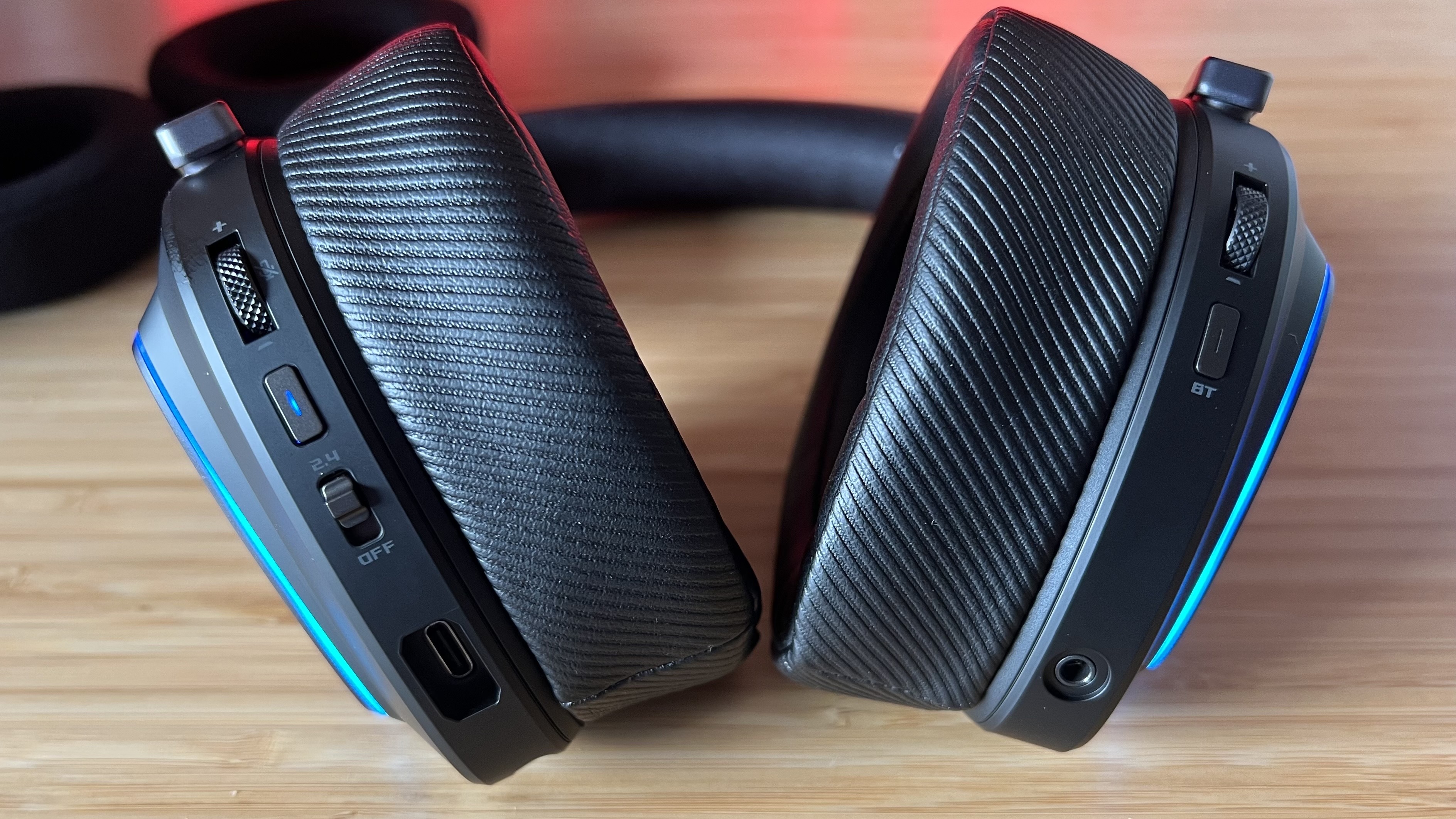
It’s clear that Asus doesn’t want its headset tied to your desktop, like its wired predecessor. That Bluetooth support and ample control scheme means this is a device designed to go everywhere with you - and that’s supported by the detachable microphone. I do prefer a retractable model, like those used by the Razer Kraken V4 or SteelSeries’ Arctis Nova line - it avoids the inevitable loss of the mic arm itself after it’s been stuffed into a different drawer. Still, the flexible gooseneck design makes placement a lot more versatile compared to the stiff-arm of the Astro A50 X and it’s easily popped in and out of the side of the cup.
You’ll be using the brand’s Armoury Crate software to tinker with the available 8-band EQ settings, choose between presets, tinker with your mic noise canceling and sidetone settings, and toggle virtual surround sound. The software doesn’t go quite as deep as Razer’s selection of tools, but does a better job of keeping track of everything than lesser-known brands.
Battery is another winner for Asus. The advertised 110 hours of 2.4GHz battery life rang true in my testing (with RGB off). From a full charge straight out of the box, I was able to run the headset for around three weeks (roughly 3-5 hours a day) before needing to charge up. Bluetooth mode does open you up to a slightly longer runtime as well. Those numbers take a significant hit with RGB enabled - I only managed a week with those LEDs blaring. That’s still one of the sturdiest batteries I’ve tested so far - the HyperX Cloud Alpha Wireless still retains its top spot with 300 hours on the clock, but the next runner-up is the HyperX Cloud 3 Wireless with only 120 hours to its name.
Performance
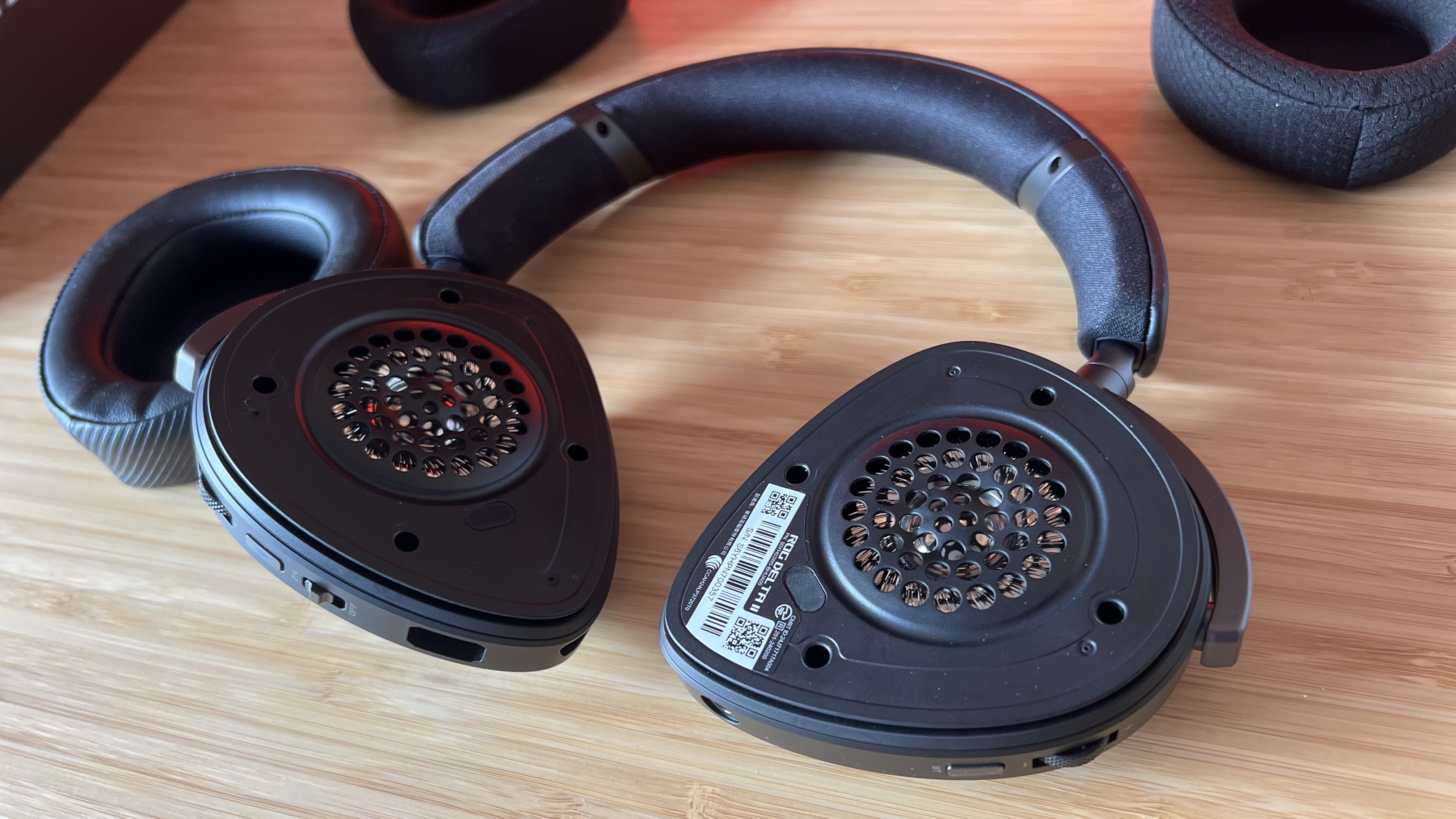
The Asus ROG Delta II uses 50mm titanium-plated drivers to achieve a crisp, clear sound profile that doesn’t get overwhelmed at either end of the spectrum. That’s not always a good thing. If you’re looking for a slightly warm but ultimately neutral sound this is a fantastic pickup, but most players will find themselves seeking something with a little more energy overall.
The audio isn’t bad it’s just not that exciting. If this was a $120 headset I’d be singing its praises, but with an extra $100 added onto that price tag, I’d expect a more dynamic sound quality. Of course, if you prefer a more acoustic-sounding experience you’re going to have a good time here. The lower ranges never threaten to overwhelm higher frequencies, even holding their balance well in trickier scenarios like Doom Eternal.
That flatter out-of-the-box soundscape also means competitive players are particularly well catered to. Footsteps, gunshots, and reloads are all crystal clear in their placement, moreso than in other headsets that place a higher priority on filling the soundstage with environmental ambience. I’d even suggest that this is a better headset for CS:2 than the SteelSeries Arctis Nova Pro Wireless due to its deft handling of positional audio. It’s also one of the best PS5 headsets I’ve tried when it comes to representing Spider-Man Miles Morales’ Time to Rally mission in all its 3D glory.
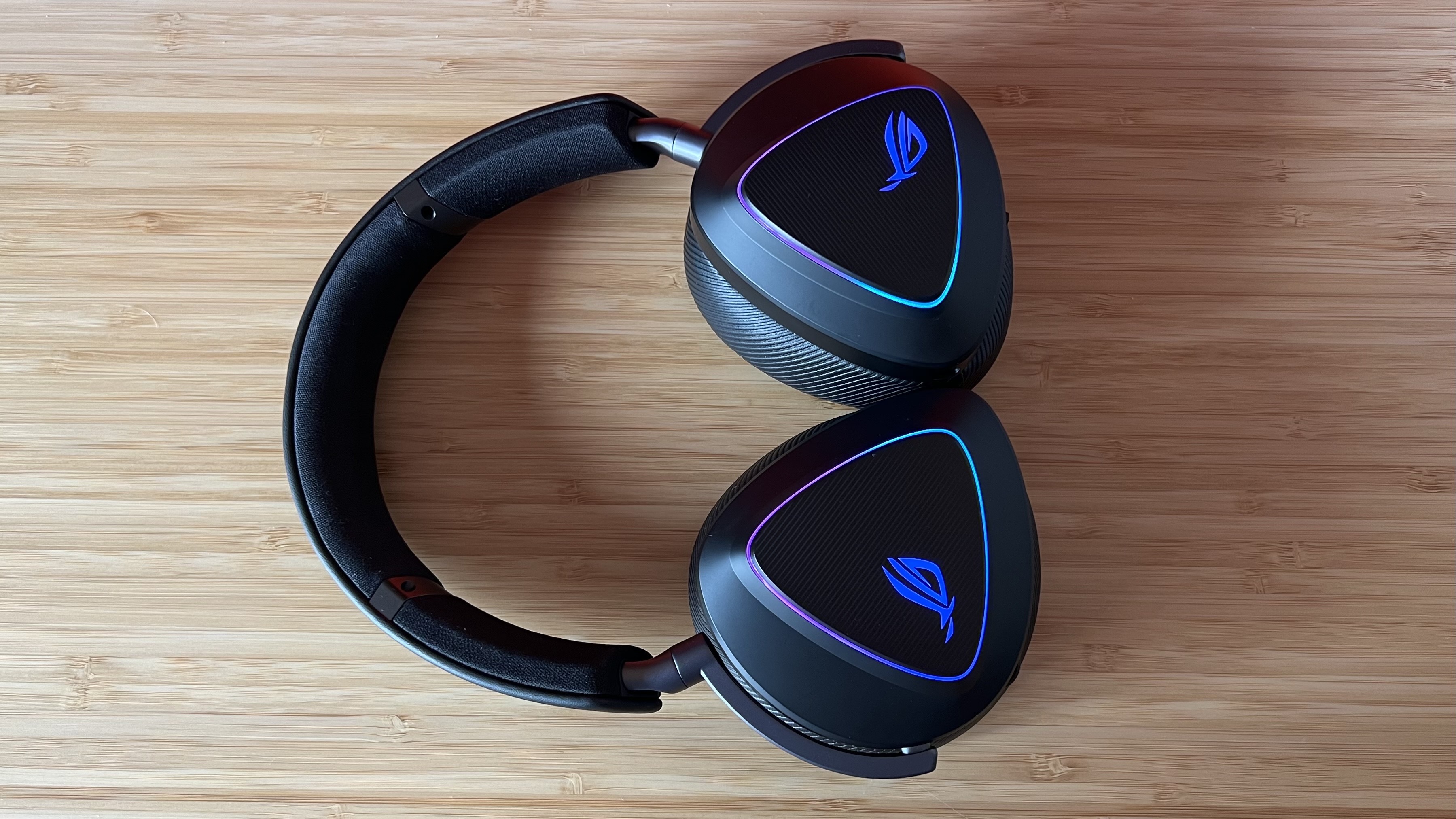
It’s a clean and accurate experience overall, which works particularly well for lighter Nintendo Switch soundtracks like Super Mario Sunshine and more delicate audio profiles like Oxenfree 2. But I still found myself looking for a little more power in the lower mids and bass ranges. I didn’t get the same sense of dread when tip-toeing through the hotel in The Last of Us Part 2’s The Descent mission, even if the echoes and screeches of nearby enemies were well translated.
Asus is also proud of its 10mm super-wideband microphone, and it should be - this is a crisp, clean voice capture with enough texture and vibrancy to take on the fantastic Razer BlackShark V2 Pro and BlackShark V2 Hyperspeed. Where it falls short of these industry darlings, though, is its noise cancellation. I’ve grown pretty used to my headset mic not picking up details like my keyboard and mouse clicking, so I was surprised to find that not even the dedicated Noise Gate setting in Armoury Crate could fully remove them from a recording.
Should you buy the Asus ROG Delta II?
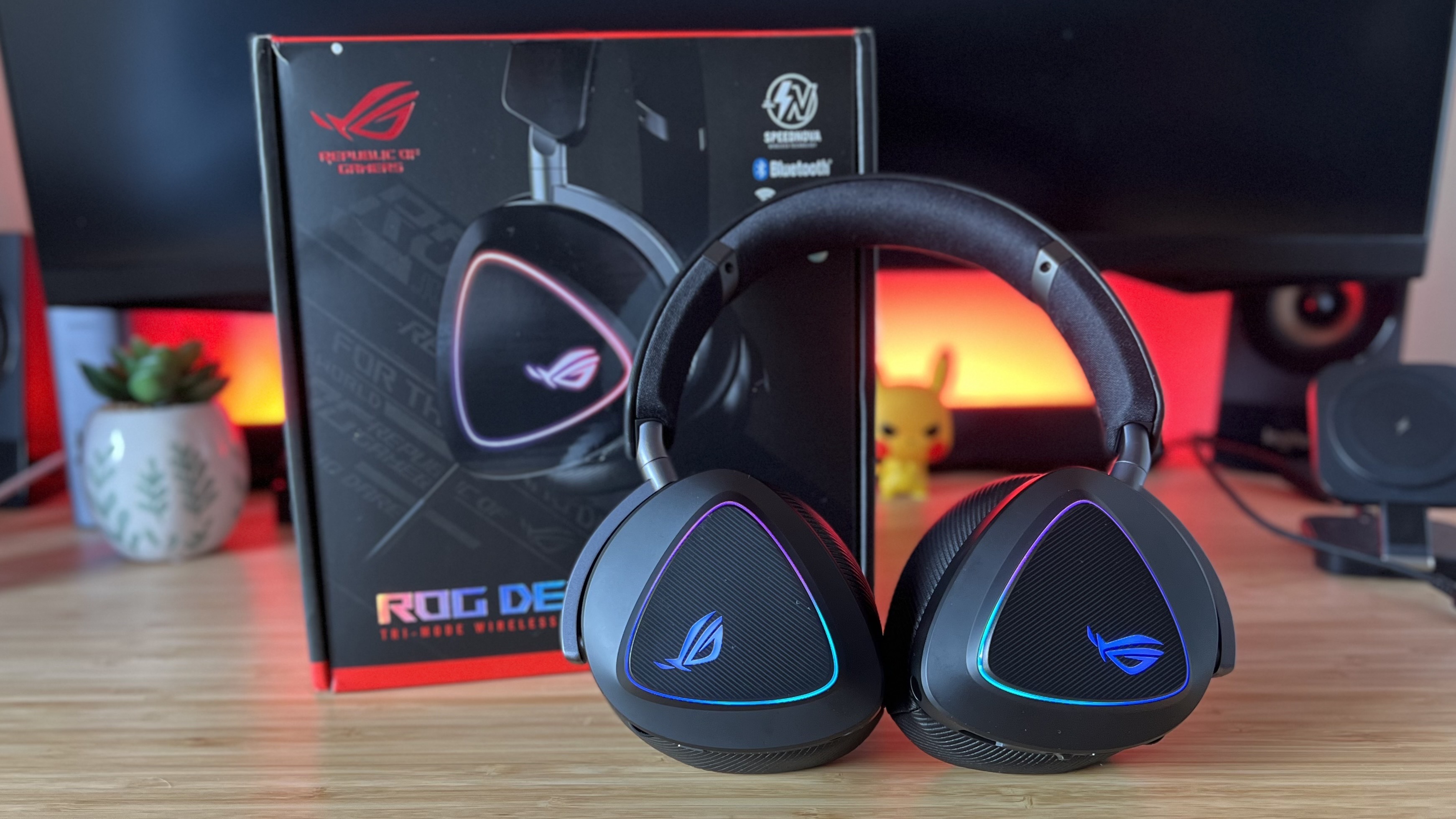
I wouldn’t recommend the Asus ROG Delta II to the masses. It’s got a solid set of specs and a respectable sound quality (though you’ll have to truly be after a neutral soundstage to appreciate it), but it doesn’t do enough to truly separate itself in this more obscure market position. There are headsets at just over $100, like the Razer BlackShark V2 Hyperspeed or SteelSeries Arctis Nova 5 Wireless, that offer a more robust sound quality overall while dropping connectivity features - and they each come with their own benefits as well. Meanwhile, the top end of the price scale manages to nail nearly everything the Asus ROG Delta II gets right while also addressing its comfort and bass range shortcomings.
I say nearly everything, because there is one scenario in which I would be thrusting this headset directly into the hands of anyone who raised it with me. If you’re big on simultaneous connection, say you regularly chat with a friend or listen to music while also playing your games, there’s nothing better out there at the moment. Asus has given these specific players a wealth of features to play with, more so than any other device on the market. It’s enough to cancel out the design concerns or low-quality noise isolation by itself. Just note that this simultaneous connection won’t work when wired in, so those after an Xbox Series X headset are out in the dark on this one.
How I tested the Asus ROG Delta II
I used the Asus ROG Delta II for a period of six weeks, testing across all the games in my current backlog as well as our benchmarking staples. When connected to my PC I was using the cups for CS:2, Doom Eternal, Fallout 4, Indiana Jones and the Great Circle, and Oxenfree 2. On PS5, I tested across Marvel’s Spider-Man: Miles Morales, The Last of Us Part 2, Ghostwire Tokyo, and Doom Eternal (for cross-platform comparison). Meanwhile, on Nintendo Switch, I tested in Super Mario Sunshine and Super Mario RPG. For more information on how we test gaming headsets, check out the full GamesRadar+ Hardware Policy.
We’re also helping you find the best PC headset on the market, as well as the best Nintendo Switch headset. For more portable options, though, take a look at the best gaming earbuds available now.







